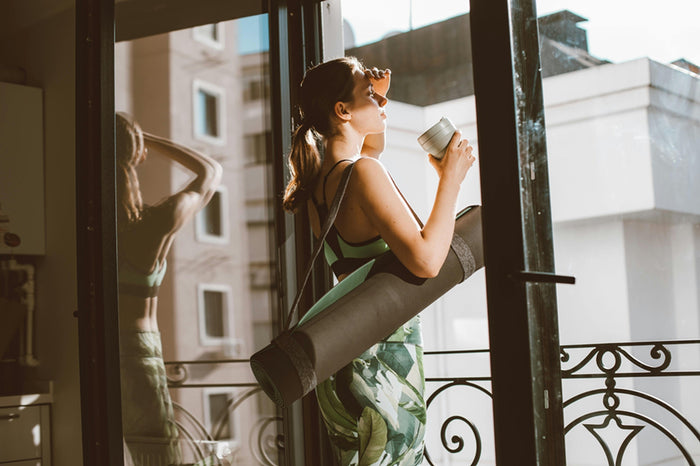Ouch! Is that a twinge in your ankle, a pain in your knee and an ache in your elbow? Not again...
Your body is a precious resource, and you don't want to unknowingly injure yourself during your workout. That's why we're here, and that's probably why you're reading this article right now, correct? Thought so.
While a busted knee from a hard workout might feel like it gives your bragging rights, it's not cool to injure yourself because you're working out too hard. Learn how to push your body safely with our guide to finding your limits without hurting yourself.
Why do we sustain common workout injuries?
Most sports injuries are from overuse and can become chronic. Although it may seem as though injuries are simply part and parcel of working out regularly, this is not true and most are completely preventable. If you’re keen to train but don’t want to have to worry about injury setbacks, check out these five common causes of injury and make sure avoid, avoid, avoid.
Experiencing common workout injuries and want to know how to avoid them? Here we've pulled together some of the most common workout injuries and our tips for injury prevention.
The most common workout injuries: revealed
Let's not beat around the bush: here's the list you've been looking for...
- The dreaded shin splints
- Sprained ankle(s)
- Pulled muscle
- Wrist sprain
- Knee injuries
- Shoulder injuries
- Tendinitis
So, now you know what you're potentially in for (if you haven't yet sustained one of these common workout injuries), fingers crossed you don't become victim to one of these potentially painful conundrums. If you're in the unfortunate position of already having one of these troublesome injuries, read on... you're going to need to work out why you've sustained this injury to ensure it doesn't happen again.
1. You're pushing too hard
Don't walk before you can run (in some cases, this is literal advice). It's important to not increase the intensity of your workouts too much too soon, and to make sure that you know your limits.
You should always feel in control. If you’re running, don’t add more than 10% per week in time or distance and if you're weight training, increase weights gradually, at a consistent pace.
2. You're not warming up properly
Slow and steady wins the race. Kicking a workout off at 100% effort will lead to burnout and muscle injury. Start off with some static stretching and build up to gentle movements to keep your muscles flexible and prevent strains. Not only will your body be gradually alerted to the change of state and respond accordingly, but you'll be able to go for much longer.
3. You're wearing the wrong gear
Does the phrase 'all the gear, but no idea' ring a bell at all?
Whilst we're sure you know what you're doing, we want to make one thing clear. Wear good shoes, not just ones that look good. Choose trainers or sports shoes that suit your needs and can give you some support and protection.
If you're not sure, you could always ask in a sports shop for help if you aren’t sure - and don't just buy those trendy shoes that all the influencers are wearing because they match your leggings. Or, if you're into running, you could (and should) check out our nifty guide on Our Five Top Tips To Selecting The Best Running Trainer For You. Always here to help!
4. You're not giving yourself time to recover
Always end your workout with some stretches to warm down, and take rest days to give yourself time to fully recover. Rest allows your muscles to build so you can keep working hard. Your muscles are supposed to be sore after a workout, and it's okay to work out again when they feel like this, but don't overdo it. If something feels wrong, lay off until you have properly recovered. Use a foam roller on sore or tight muscles.
Support your recovery with the right nutrition - get plenty of protein and ensure you're hitting your daily recommendations of vitamins. Check out The Recover Capsules to guarantee that you're getting the minerals and vitamins needed for healthy recovery.
5. You're not mixing it up (enough)
Vary your training. Incorporate strength training as well as cardio into your workout routine. Adding two resistance sessions per week can help to increase strength and prevent injuries.
Weight training is also a great way to tone up and burn fat. Work out on different surfaces such as grass or sand as well as at the gym, and focus on doing a wide variety of different exercises. This will challenge your muscles while preventing overuse.
























